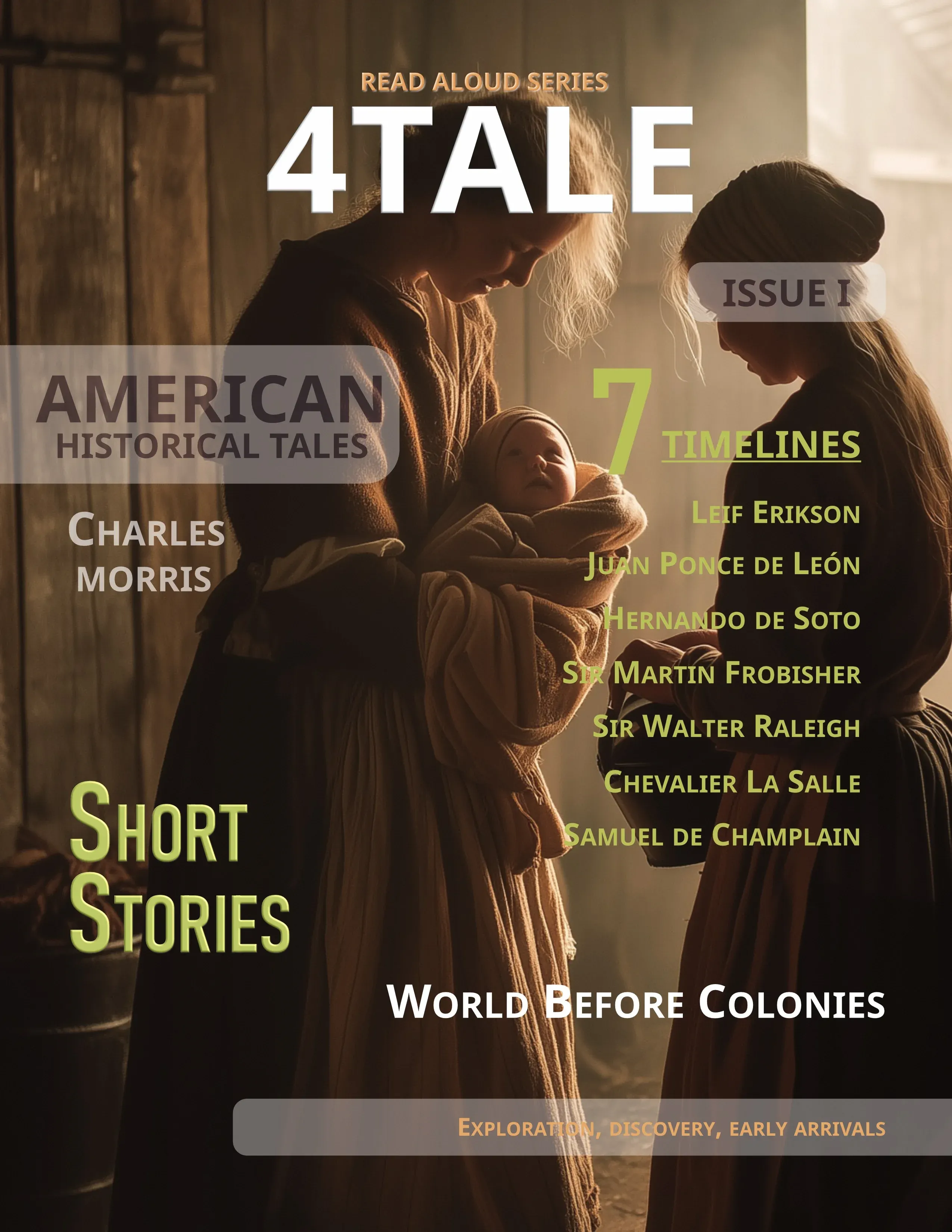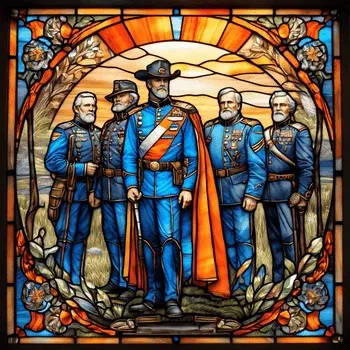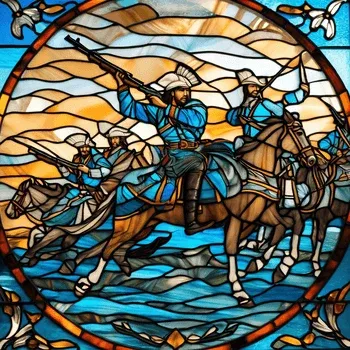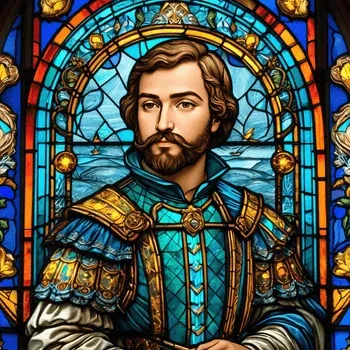BY CHARLES MORRIS
Ponce de Leon and the Fountain of Youth
Historical Tales 2 American: Story 1 of 34
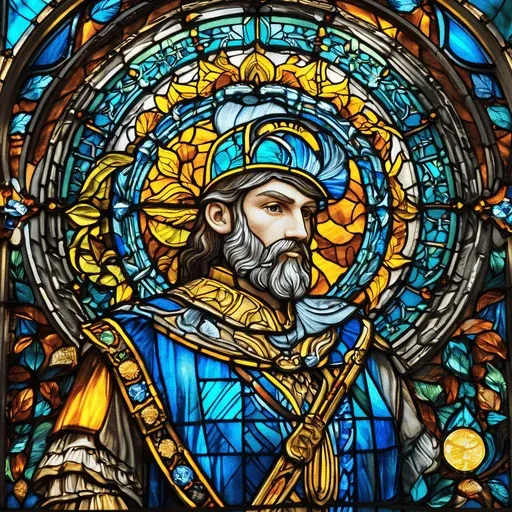
Heading

First Landing: His first landing in Florida was near the mouth of the St. John River, not far from where St. Augustine now stands. He called the place "the Bay of the Cross" and took possession of the land for the King of Spain.
Second Expedition and Death: In 1521, Ponce de Leon returned to Florida to establish a colony. However, the natives met them with hostility, and Ponce de Leon was severely wounded by a poisoned arrow, leading to his death shortly after returning to Cuba.
A good book we like, we explorers. That is our best amusement, and our best time killer
- Roald Amundsen, Explorer
The Unveiling Journey of Juan Ponce de Leon: The Discovery of Florida and the Quest for the Fountain of Youth
Embark on the extraordinary voyage of Juan Ponce de Leon, the intrepid explorer who first laid eyes on the verdant land we now know as Florida. This tale of exploration and ambition drive us back to the year 1513, when the mythical Fountain of Youth held sway over the imaginations of many. Uncover the truth behind de Leon’s journey as we delve into his quest, the discovery, and the untold stories that marked this significant moment in history.
The First European to Discover Florida
In history, the year 1513 stands out as a remarkable milestone. This was the year when Spanish explorer Juan Ponce de Leon first set foot on the soils of what we now know as Florida. Sailing from the Bahamas, Ponce de Leon's expedition made him and his crew the first Europeans to behold the flower-filled vistas of this land. The Spaniards named their newfound territory either after their term for Easter, Pascua Florida, or as the "land of flowers", thus marking the dawn of European influence in this region.
Who was Juan Ponce de Leon?
Juan Ponce de Leon was more than just a Spanish explorer - he was a soldier, a cavalier, and a dreamer. His quest was not just for new lands, but also for something much more elusive - the mythical Fountain of Youth. This fabled fountain was said to possess the power to rejuvenate those who bathed in its waters, a tale he had heard from the natives in the lands he had already conquered. Fueled by this fascinating lore, Ponce de Leon embarked on his fateful journey on March 3, 1513, landing in Florida for the first time on Easter Sunday, March 27.
Podcast
The Fabled Fountain of Youth: The Inspiration Behind the Expedition
The Fountain of Youth, a mythical spring of invigorating waters, was the driving force behind Ponce de Leon's voyage. He spent months wandering through the dense forests of Florida, bathing in every spring and stream his crew discovered, in the hopes that one of them might be the fabled fountain. Despite the hardship and disappointment of not finding the Fountain of Youth, Ponce de Leon's expedition was far from fruitless. His journey led to the discovery of a new land, which he named Florida, believing it to be an island.
The Discovery of Florida: A New Land Named
Upon reaching the shores of Florida, Ponce de Leon and his crew set foot on a land filled with lush greenery and vibrantly colored flowers. The beauty of this new land was so captivating that they named it Florida, either from the Spanish term 'Pascua Florida' standing for Easter or as the "land of flowers". Although the quest for the mythical Fountain of Youth was unsuccessful, Ponce de Leon's exploration was not in vain. Despite his initial belief that he had discovered an island, it was indeed an extensive landmass, now known as the state of Florida.

Return to Spain and Appointment as Governor
After months of exploration, Ponce de Leon returned to Spain, where he was warmly received. He had brought back with him stories of a new land filled with potential. Impressed by his discovery, King Ferdinand of Spain appointed him as the governor of Florida. With this new title, Ponce de Leon was given permission to establish a colony in this newly discovered territory. This was an acknowledgment of his efforts and a sign of trust from the Spanish monarchy in his leadership abilities.
The Final Expedition and Ponce de Leon's Death
In 1521, Ponce de Leon embarked on a second expedition to Florida. However, unlike the first voyage, this trip was met with hostility. The native inhabitants of Florida did not welcome the Spanish settlers. During a series of battles with the natives, Ponce de Leon was mortally wounded. Forced to retreat, he and his crew made their way to Cuba, where he succumbed to his injuries. Despite his untimely death, Ponce de Leon's explorations marked the start of the Spanish colonization in the Americas.
Conclusion
In the tale of Juan Ponce de Leon, we find the age-old human yearning for eternal youth, embodied in his tireless quest for the elusive Fountain of Youth. Though he never found this mythical fountain, his discovery of Florida marked a significant chapter in the annals of exploration. Even today, Florida continues to captivate and rejuvenate its visitors, not with magical waters, but with its balmy climes and verdant landscapes. De Leon's legacy lives on, his name forever intertwined with the story of this enchanting land.

